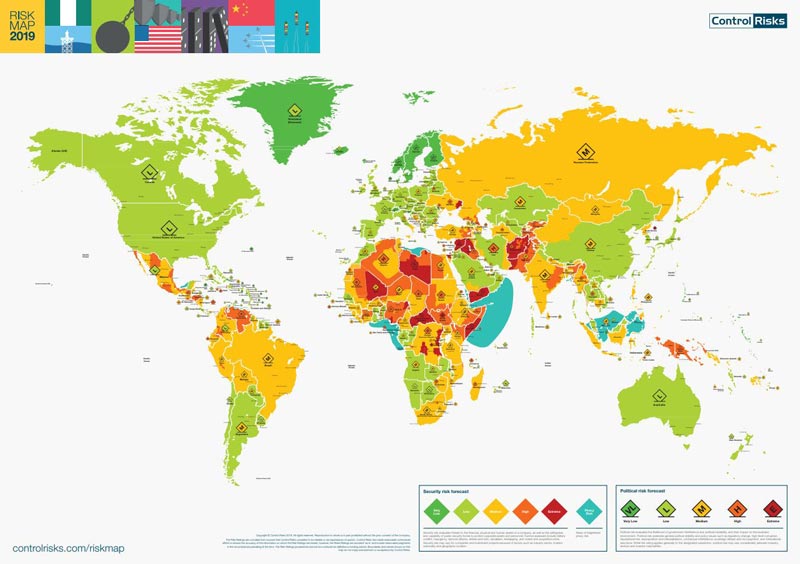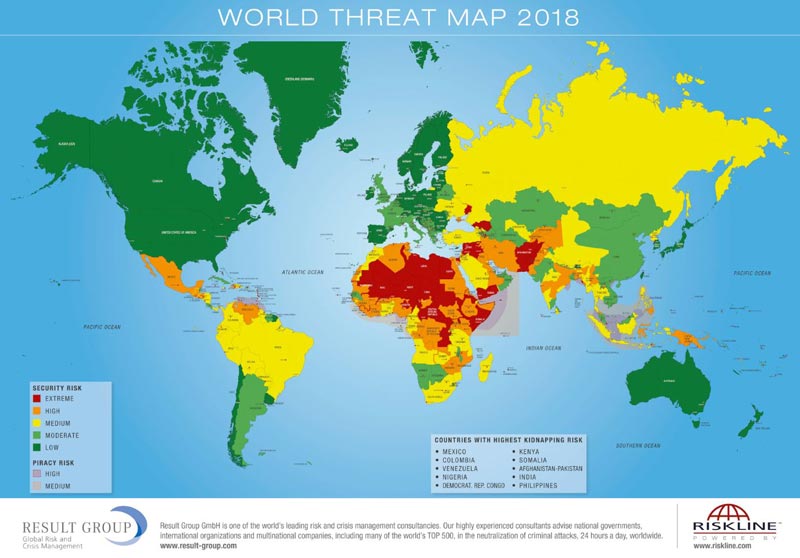Kidnapping, murder, revolution: the reality Aussie miners face in conflict zones
Mining
Mining
Once upon a time miners’ only thoughts were on how much gold, nickel or zinc they could get out of the ground, no matter the country.
But with every passing year more and more security risks are emerging, and explorers and miners have had to change the way they approach projects in risky jurisdictions such as Africa, South America and the Middle East.
Just last Friday West Africa-focused gold explorer Predictive Discovery (ASX:PDI) announced a senior employee of its joint venture partner Progress Minerals had been kidnapped and killed in Burkina Faso.
In the latter part of 2017 ruby miner Mustang Resources, which is now New Energy Minerals (ASX:NXE), lost a security guard during a ruby heist at its Montepuez mine in Mozambique.
And it’s not just the workers on the ground who are at risk: so are the executives and management.
The widely publicised news in June 2010 of a plane crash in the Republic of Congo that killed the entire board of iron ore explorer Sundance Resources (ASX:SDL) highlighted the importance of directors not travelling in the same plane.
The list of risks explorers and miners need to consider grows ever longer and now every year companies like Control Risks produce Risk Maps to highlight the countries with the greatest security risks.

Risk and crisis management consultancy Result Group and insurer Allianz zero in on the countries with the greatest kidnapping risk.
Allianz recently released its “Risk Barometer” which outlines the top 10 global business risks for 2019, and the innocuously named ‘business interruption’ is the top threat for companies for the seventh year running.
“Events such as breakdown of core IT systems, product recall or quality incidents, terrorism, political violence or rioting, and environmental pollution can bring businesses to a standstill,” Allianz said.

Time to bring in the professionals
Philip Kent-Hughes’s experience in the security industry stretches back two decades.
Having served in the Australian Army, he has consulted for some of the biggest mining, oil and gas companies in the world and now works for Melbourne crisis management firm Crisis Shield.
Mr Kent-Hughes even worked for the advisor to Sundance Resources. This is the same company that helped plan the operation to get the first ABC news crew into Ukraine after the downing of Malaysia Airlines Flight 17, and extracted people from political uprisings in Egypt and Thailand. However, he was not involved in any of these operations.
“I’ve got a map of where Australian miners are going now and in the near future and generally speaking, the three main areas we’re looking at are political and civil unrest, crime and corruption, and weather, natural disasters and terrain,” Mr Kent-Hughes told Stockhead.
“There’s a whole lot of others, like terrorism in West Africa is an issue.”
This is how you plan for a revolution
Mr Kent-Hughes said one of the key lessons learned from the uprisings in Egypt and Thailand was to pay attention to what’s going on around you and leave early if there’s civil and political unrest.
“When things are changing, get out early,” he said. “Almost like a fire safety thing – pay attention to your surroundings, make a decision to leave early and have a back-up plan.”
The other part is developing crisis plans and training people in remote first aid, personal security, anti-carjacking and what is known as HEAT (hostile, environment, awareness training), says Mr Kent-Hughes.
It is also important to have specific business travel insurance and a good international rescue company on speed dial.
“What they shouldn’t do is book their flights with Flight Centre and get the Flight Centre travel insurance,” Mr Kent-Hughes said.
“They need to get proper business insurance for proper travel overseas that has a response capability.”
Just get two planes. Just do it.
When it comes to directors travelling together, Mr Kent-Hughes and John Koeppler, national head of mining for risk management advisor Gallagher, agree you just don’t do it.
“The entire executive shouldn’t go anywhere [together] in my opinion,” Mr Kent-Hughes said. “Even if they’re going to Wagga Wagga, get two planes.”
Mr Koeppler says it’s important to have company rules in place that prevent more than two senior people travelling together.
“It is however difficult to manage this in Africa as the availability of aircraft and cost of hire makes it difficult,” he said.
ISIS and Al Qaeda are targeting Westerners
Africa’s Sahel region is particularly vulnerable to terror attacks, says US Director of National Intelligence Daniel Coats.
“ISIS and Al Qaeda–allied groups, along with other violent extremists, will attempt to target Western and local government interests in the region,” he said in a Worldwide Threat Assessment last year.
The Sahel region covers parts of Senegal, Mauritania, Mali, Burkina Faso, Algeria, Niger, Nigeria, Chad, Sudan, Eritrea, Cameroon, Central African Republic (CAR) and Ethiopia.
The US Threat Assessment identified political violence in the Democratic Republic of Congo (DRC), Burundi and CAR as specific causes of conflict in the near future.
Australian mining operations are mainly centred around Senegal, Mali and Burkina Faso, and lithium followers will know Aussie explorers are highly active in the DRC.
Mr Koeppler says miners in Africa are facing increased instances of theft, fraud and corruption.
OH&S applies in central Africa as well
Mr Koeppler told Stockhead miners wouldn’t last long without rigorous risk management in place.
“The lack of adequate risk management around OH&S will ultimately lead to an increase in injuries to workers and possibly a fatality,” he said.
“If this occurs, the relevant authorities can shut down the mine until they have finished their investigations.”
Mr Kent-Hughes says where back in the day “where you could just send people off to foreign countries” is a thing of the past.
“As workplace occupational, health and safety (OH&S) legislation is becoming more comprehensive, that and the notion of the duty of care is more serious.”
Mid-last year, the Western Australian government released proposed amendments to the State’s OH&S laws to bring them into line with the national Work Health and Safety Bill.
The new laws are expected to redefine the workplace to cover any place a worker goes for the company, including overseas, and will severely increase the penalties for offences — the first increase in over a decade.
WA and Victoria are the only two states that don’t currently follow the federal legislation.
The new bill is expected to be introduced this year.